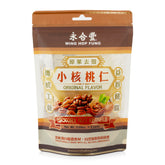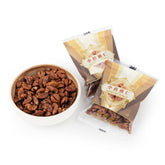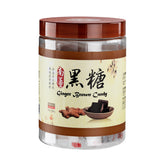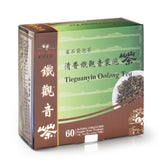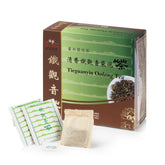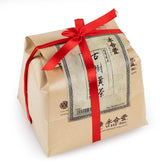Food Energy

Our love of food echoes other vital relationships because, without realizing it, we eat to fulfill physical and emotional needs. Your favorite sweet snack may be a needed pause in the day for stress-relief. Spicy dishes may stimulate social chatter with friends. Your eating habits have created ongoing relationships with foods, places, events, and people. To improve dietary habits, we need to alter our relationship to certain foods. Do you consume fast foods on the run, purchase bargains at the supermarket, or prepare ethnic dishes from family recipes? Convenience, price, and tradition are important aspects of our socialization. However, there are other more fundamental reasons that we select one food over another. . . They affect our energy and emotions.
How adventurous are you when trying new dishes? What catches your attention--the color, shape, aroma, taste, or texture--of foods? With a little help, your diet will broaden and eventually improve.
The Problem of “Good” or “Bad” Foods
Many overweight people express fears and desires when talking about foods. Food plays an important role in our self image. When you clarify your language, you change your experience. As much as possible, eliminate words of blame or guilt concerning diets. Foods are neither “good” nor “bad.” All habits become reinforced over time. You have learned to walk and run after crawling. They are all useful activities. You can rethink your relationship to food by paying close attention to your words in the following way.
Sensuous Descriptions
Slimming foods like celery, cucumber, apple, watermelon, pear, and salad greens are refreshing and cooling. Dense whole grain breads and steal cut oats are chewy and tasty compared to mushy cereals and bland white breads. Fries and bacon are salty and greasy. Taste and texture adjectives engage the senses. Healthy people often perceive digestive comfort more acutely than overweight people. To remain slender, we should neither abuse nor ignore digestion. As an example, when was the last time you were lost in thought, worry, or work and stuffed your addictions? Part of the fun of our healthy diet is enjoying a variety of tastes and textures in foods. Overweight people may be weakened from illness, hormonal imbalances, or feel emotionally preoccupied. Food addictions arise from eating without tasting. If you snack while working, watching television, or driving, you are bound to gain weight because you are not paying attention.
Diet for Food Energy
An energetic approach to diet frees discovery and experimentation. You will discover that food qualities--their taste and texture--are often linked to their effects. Chinese herbalists consider Food Energy:
- Sweet, heavy, creamy and oily foods are sedating for body and mind.
- Salty foods are drying. They increase thirst and dry skin.
- Bitter and Pungent foods like tea and ginger are digestive.
- Bitter helps release digestive bile
- Pungent ginger warms the stomach to enhance digestion.
As a rule, try to vary the flavors, colors, and textures of your ingredients. A meal can be a feast for the senses. A fine chef knows that delicious foods are savored in small portions.
Chewing Boosts Digestive Juices
Wise health experts know that foods requiring chewing such as coarse, whole grain breads, al dente whole grain pastas, cooked dried beans, crisp fruits and vegetables, nuts, and seeds require less work from the pancreas. They also signal the brain to release more digestive enzymes. Chewy complex foods digest more slowly, satisfy us longer, and protect us better against overweight, high blood pressure, and diabetes than foods high in simple sugars such as white potatoes and breads made with finely milled flour. Chewy foods are healthy foods that taste better.
Protective Fats
Our brain is made, to a large extent, of cholesterol. We need fats to stay young, cheerful and healthy. Studies has shown how a fat-deprived diet leads to aggressive behavior. Some of our healthiest fats are those found in nuts such as walnuts, almonds, and cashews, seeds such as sesame, pumpkin, flax, and hemp, from olives, and avocados. Other healthy oils come from fatty fishes such as eel, salmon, mackerel, herring, and sardines. Extra virgin olive oil, avocado, walnut, pumpkin seed, grape seed, and flax seed oils are fine in salads. Grapeseed and peanut oils tolerate high heat without smoking, an important consideration for preventing cancer.
Asian vs. American Diets
Asian populations that traditionally eat plant-based diets, cold water fishes, and seaweeds live longer and enjoy better health than most Americans who overeat meats, margarine, salad dressings and mayonnaise, whole milk products, cakes, cookies, refined foods, and simple sugars found in most starches and sweet drinks. Most nutritionists recommend cutting calories as the best method for weight loss. Unfortunately, despite the popularity of fat-free foods, many manufacturers add sugars to improve the taste. Also we suffer from simple refined carbohydrates that weaken digestion.
Counting calories will never alter your addictions--or if you prefer, your food preferences. You don’t have to be a math major to lose weight. By increasing your intake of teas, fresh fruits and vegetables, and (bitter, sour, alkaline, cleansing, and crunchy high fiber foods) you will naturally ease digestion, elimination, and therefore enhance slimming.
Many people eat to reduce stress. Unfortunately, a desire for comfort and safety can never be satisfied with food because we always require more food. There begins an addictive craving. You can make progress by addressing your emotional needs and their relationship to your food choices.
(See: FEED YOUR TIGER by Letha Hadady)
Vary Your Experience
Transforming food cravings takes more than nerves of steel. Your addictions have been with you a long time. You may need to dine at new restaurants or set the table differently to create a new context for meals. Using smaller plates helps. Eating small meals and snacks throughout the day and drinking plenty of digestive teas between meals tones and balances digestion. Some experts say that small meals shrink the stomach so that you fell full sooner. In any case, you can have a new awareness of your own body: When you recognize the energy in foods, you can select slimming, satisfying dishes instead of fattening ones. For example, some foods are stimulating and cleansing, others sedating or depressing for body and mind. Think of your current diet for a moment. Which foods, among those that you regularly consume, make you feel:
- Light
- Clean
- Limber
- Centered
- Nourished
- Satisfied without increasing fat
Teas for Health, Beauty and Vitality
Cleanse, tone and invigorate your body and help ease your mind by drinking teas. Chinese teas are a great gift from the earth. We benefit from the centuries old tradition of staying young and active by enjoying teas. Tea (Camellia sinensis) is mildly bitter/sweet, detoxifying, digestive and stimulating. It contains L-theanine to lift our mood and improve mental focus. Although, all teas are made from the same tea leaf, their differences in taste, color and effects are due to processing. They are all rejuvenating.
- White Tea has the least caffeine and most antioxidants. It subtly sweet
- Green Tea is cooling, cleansing, uplifting, helps prevent cancers
- Matcha Tea is refreshing, contains more chlorophyll
- Oolong Tea is semi-fermented, fragrant, invigorating, slimming
- Pu-erh Tea protects the heart, is slimming, earthy and rich in flavor
- Black Tea stimulates energy and protects the heart
By emphasizing the above slenderizing, digestive foods you reinforce positive habits. That liberates your energy to achieve things that have seemed impossible.

